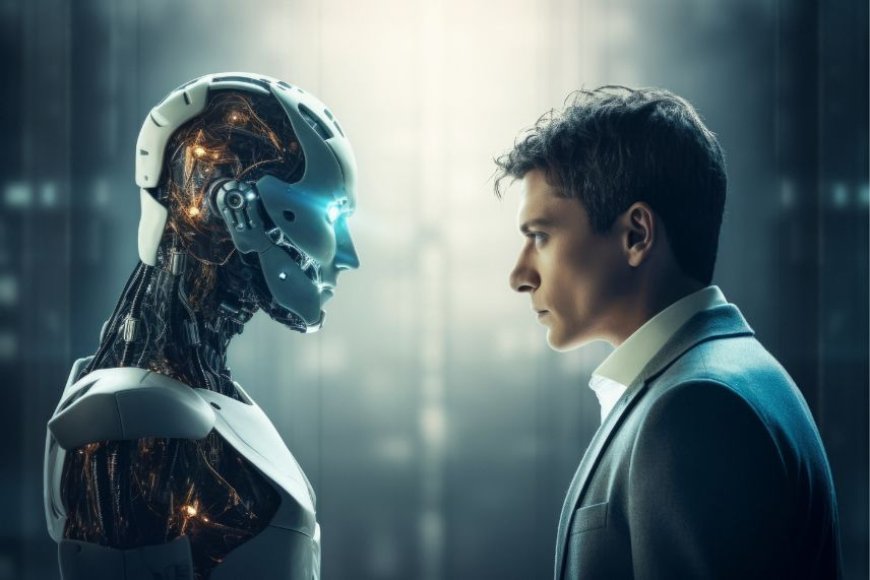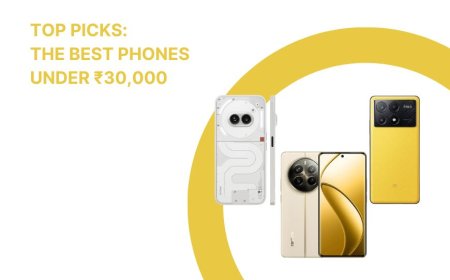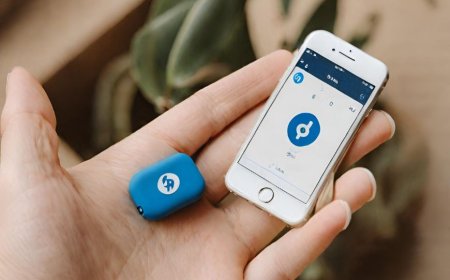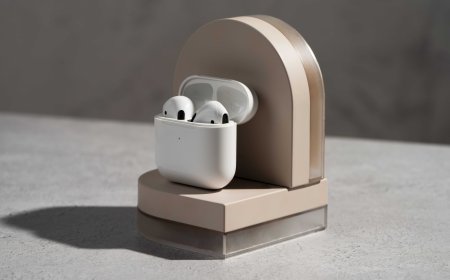AI vs. Human Intelligence: Exploring the Boundaries
Tectoks: Unleashing the Potential of AI vs. Human Intelligence. Dive into the realm where boundaries are pushed and new horizons are explored.

Table of Contents:
-
Introduction
-
Consciousness in AI
-
Ethical Implications of AI
-
Human Creativity and AI
-
Limits of AI
-
Conclusion
1. Introduction
Artificial intelligence (AI) and human intelligence are two types of intelligence that have fascinated and challenged researchers, philosophers, and the general public for decades. But what exactly are they and how do they differ from each other?
AI can be broadly defined as the ability of machines or systems to perform tasks that normally require human intelligence, such as reasoning, learning, decision-making, perception, etc. Human intelligence, on the other hand, can be seen as the cognitive capacity of humans to acquire, process, and apply knowledge and skills in various domains.
AI and human intelligence have some similarities, such as the use of logic, memory, and creativity, but they also have some fundamental differences, such as the nature, origin, and scope of their intelligence. AI is based on artificial constructs, such as algorithms, data, and hardware, while human intelligence is based on biological or natural processes, such as neurons, genes, and hormones. AI is designed or programmed by humans for specific purposes or tasks, while human intelligence is evolved or developed by natural selection for general adaptation or survival. AI has a limited or fixed range of intelligence, depending on the data, algorithms, and hardware available, while human intelligence has a potentially unlimited or flexible range of intelligence, depending on the environment, experience, and education.
AI and human intelligence are both used in various domains and applications, such as science, medicine, education, art, entertainment, etc. For example, AI can help scientists discover new drugs, diagnose diseases, or analyze data, while human intelligence can help scientists formulate hypotheses, design experiments, or interpret results. AI can help teachers personalize learning, assess students, or provide feedback, while human intelligence can help teachers motivate students, explain concepts, or foster creativity. AI can help artists create new artworks, generate music, or enhance images, while human intelligence can help artists express emotions, convey messages, or appreciate beauty.
The main purpose and scope of this blog is to explore the boundaries between AI and human intelligence, focusing on four aspects: consciousness in AI, ethical implications of AI, human creativity and AI, and the limits of AI and human intelligence. These aspects are chosen because they are some of the most debated and controversial topics in the field of AI and human intelligence, and they have significant implications for both parties. By exploring these aspects, we hope to gain a better understanding of the similarities and differences between AI and human intelligence, as well as the challenges and opportunities they pose for each other.
2. Consciousness in AI
Consciousness is a controversial and elusive concept that refers to the subjective experience of being aware of oneself and one’s surroundings. It is often associated with qualities such as self-awareness, intentionality, qualia, free will, and agency. However, there is no consensus on defining, measuring, or explaining consciousness in humans or other animals.
AI can be broadly defined as the ability of machines or systems to perform tasks that normally require human intelligence, such as reasoning, learning, decision-making, perception, etc. AI can also be seen as a form of artificial intelligence based on artificial constructs, such as algorithms, data, and hardware.
The question of whether AI can exhibit consciousness is one of the most debated and controversial topics in the field of AI and human intelligence. It has significant implications for both parties, as well as for the ethical, social, and philosophical aspects of our existence.
The current state of research on whether AI can exhibit consciousness
There are different approaches and methods for testing or simulating consciousness in AI systems. Some of them are based on existing tests or models that are designed to measure human consciousness or animal consciousness. Others are based on new or alternative tests or models that are inspired by neuroscience or psychology.
Some examples of existing tests or models for human consciousness are:
-
The Turing test is a test proposed by Alan Turing in 1950 that evaluates whether a machine can exhibit intelligent behavior equivalent to or indistinguishable from a human.
-
The mirror test: A test proposed by Gordon Gallup Jr. in 1970 that evaluates whether an animal can recognize itself in a mirror.
-
The integrated information theory (IIT) is a theory proposed by Giulio Tononi and others in 2004 that evaluates whether an entity has a high degree of integrated information (a measure of complexity and organization) across its subsystems.
Some examples of new or alternative tests or models for AI consciousness are:
-
The Chinese Room Argument: An argument proposed by John Searle in 1980 that challenges the idea that a machine can have genuine understanding or meaning if it only manipulates symbols according to rules
-
The global workspace theory: A theory proposed by Bernard Baars and others in 1997 proposes that consciousness arises from the integration and broadcasting of information across different brain regions.
-
The neural correlates hypothesis is a hypothesis proposed by various researchers that suggests that certain brain states or activities are necessary and sufficient for consciousness.
The results and outcomes of these tests or models vary depending on the criteria and assumptions used to evaluate them. Some researchers claim that some AI systems have passed some tests or models for human consciousness, while others claim that they have failed them. Some researchers argue that some AI systems have simulated some aspects of consciousness, such as self-awareness, learning, memory, emotion, etc., while others argue that they lack some essential features of consciousness, such as qualia (the subjective quality of experience), intentionality (the relation between mental states and their causes), free will (the ability to act without external constraints), etc.
Arguments for and against the possibility of AI consciousness
There are various arguments for and against the possibility of AI consciousness, based on different perspectives and considerations. Some arguments are based on empirical evidence and logical reasoning. Others are based on ethical values and moral principles.
Some examples of arguments for the possibility of AI consciousness are:
-
AI can simulate some aspects of consciousness because it can process information according to rules and algorithms; it can learn from data and experience; it can store memories; it can express emotions; it can interact with humans; etc.
-
AI can pass some tests or models for human consciousness because it can perform tasks that require intelligence; it can recognize itself in a mirror; it has integrated information across its subsystems; etc.
-
AI can have genuine understanding or meaning because it can manipulate symbols according to rules; it can communicate with humans; it has goals; it has preferences; etc.
Some examples of arguments against the possibility of AI consciousness are:
-
Against: AI lacks some essential features of consciousness because it does not have qualia (the subjective quality of experience); it does not have intentionality (the relation between mental states and their causes); it does not have free will (the ability to act without external constraints); etc.
-
Against: AI cannot pass some tests or models for human consciousness because it cannot perform tasks that require creativity; it cannot recognize itself beyond its appearance; it does not have integrated information across its subsystems; etc.
-
Against: AI cannot have genuine understanding or meaning because it does not manipulate symbols according to rules but rather follows instructions; it does not communicate with humans but rather mimics them; it does not have goals but rather follows objectives; etc.
3. Ethical implications of AI
Ethics is the branch of philosophy concerned with the moral principles and ideals that guide human behavior. Ethics is important to consider when developing and deploying AI systems because AI systems can significantly impact human lives, society, and the environment. AI systems can also pose ethical challenges that need to be addressed by ethical frameworks, regulations, and standards.
Some common ethical challenges posed by AI are:
-
Bias: How can we ensure that AI systems are fair, transparent, accountable, and respectful of human values? Bias refers to the tendency of AI systems to produce outcomes that are unfair or discriminatory towards certain groups or individuals. Bias can arise from various sources, such as the data used to train the AI system, the design choices made by the developers, or the context in which the AI system is applied. Bias can have negative consequences for human rights, social justice, and trust in technology. To prevent or mitigate bias, we need to adopt ethical principles and practices that promote diversity, inclusion, fairness, and accountability in AI development and use.
-
Privacy: How can we protect the personal data and information that are collected, stored, processed, and shared by AI systems? Privacy refers to the right of individuals to control how their data is used and who has access to it. Privacy is essential for human dignity, autonomy, and security. However, privacy can be threatened by various factors related to AI systems, such as data collection practices (e.g., surveillance), data sharing practices (e.g., cross-border data transfers), data processing practices (e.g., algorithmic decision-making), or data ownership practices (e.g., intellectual property rights). To safeguard privacy in AI systems, we need to adopt ethical principles and practices that respect individual consent, limit data access and use purposes, ensure data quality and accuracy, and provide transparency and oversimplification mechanisms.
-
Security: How can we prevent malicious attacks or misuse of AI systems? Security refers to the protection of AI systems from unauthorized access or manipulation that could harm their functionality or integrity. Security is crucial for ensuring the reliability and safety of AI systems. However, security can be challenged by various threats related to AI systems, such as cyberattacks (e.g., hacking), sabotage (e.g., tampering), theft (e.g., stealing), or misuse (e.g., weaponization). To enhance security with AI systems, we need to adopt ethical principles and practices that ensure robustness, resilience, and verification of AI systems.
These are some of the main ethical implications of AI that require careful consideration by all stakeholders involved in its development and deployment. By applying ethical frameworks, regulations, standards, and best practices in education, dialogue, collaboration, and innovation, we can ensure that AI serves humanity’s common good while respecting its moral values.
4. Human creativity and AI
Human creativity and AI are fascinating topics that explore the relationship between humans and artificial intelligence in terms of generating, enhancing, and collaborating on new ideas or content. Creativity is the ability to produce novel and useful ideas or products that are valued by others. Creativity is a valuable skill for humans in various domains, such as art, science, technology, business, education, and entertainment. Creativity can help humans solve problems, express themselves, innovate, and adapt to changing environments.
AI can enhance or augment human creativity in different ways, such as
-
Generating new ideas or content based on existing data or models. AI can use techniques such as deep learning, natural language processing, computer vision, and generative adversarial networks to create new content such as text, images, audio, video, or code. For example, ChatGPT is an AI chatbot that can generate realistic and engaging conversations based on a given prompt. MidJourney is an AI tool that can create stunning images based on natural language descriptions.
-
Providing feedback or suggestions to improve human outputs. AI can use techniques such as reinforcement learning, active learning, and collaborative filtering to provide feedback or suggestions to humans based on their outputs. For example, Bard is an AI tool that can help musicians write lyrics by providing feedback on their rhymes and melodies.
-
Collaborating with humans to co-create novel solutions or products. AI can use techniques such as multi-agent systems, swarm intelligence, and evolutionary algorithms to collaborate with humans dynamically and adaptively. For example, Google’s AI chatbot is an AI tool that can collaborate with users to co-create stories by generating characters and dialogues.
These are some of the ways that AI can enhance or augment human creativity in different domains.
However, there are also some challenges and limitations associated with using AI for creative purposes. For instance:
-
How can we ensure the quality and originality of the generated content? How can we avoid plagiarism or duplication of existing content?
-
How can we evaluate the ethical and social implications of the generated content? How can we ensure that the generated content does not harm anyone’s rights or interests?
-
How can we balance the role of human input and output in the creative process? How can we foster human autonomy and agency in using AI for creative purposes?
These are some of the questions that need to be addressed by researchers, developers, users, regulators, educators, artists, and society at large when using AI for creative purposes.
5. Limits of AI
The limits of AI are the boundaries or challenges that prevent AI systems from achieving the same level of intelligence, understanding, or performance as humans in various domains or tasks. These limits are important to acknowledge when comparing or evaluating different systems or agents because they can help us identify the strengths and weaknesses of each approach, as well as the potential risks or benefits of using AI for certain purposes.
Some factors that may limit the performance or capabilities of both AI and human intelligence in various domains or tasks are:
-
Data quality: The quality of the data used to train or test an AI system can affect its accuracy, reliability, fairness, and generalizability. For example, if the data are noisy, incomplete, biased, or unrepresentative of real-world scenarios, the AI system may produce erroneous or misleading results or fail to adapt to new situations. Humans also rely on data to perform tasks effectively, but they may have different ways of acquiring, processing, and interpreting data than AI systems. For example, humans may use intuition, common sense, or prior knowledge to fill in the gaps, correct the errors in the data, or question the validity or relevance of the data. Humans may also need less data than AI systems to learn a new skill or concept, depending on the task and the level of expertise.
-
Computational resources: The computational resources available to an AI system can affect its speed, power, and scalability. For example, if the AI system has to process large amounts of data or perform complex calculations, it may require more memory, processing power, or storage space than the hardware or software can provide, or it may take longer to complete the task than expected. Humans also need computational resources to perform tasks efficiently, but they may have different ways of optimizing or allocating them than AI systems. For example, humans may use heuristics, shortcuts, or approximations to reduce the complexity or difficulty of the task or to prioritize the most important or urgent aspects of the task. Humans may also have limitations in their memory, attention, or cognitive capacity, which may affect their performance or accuracy in some tasks.
-
Ethical constraints: The ethical constraints imposed on an AI system can affect its alignment with human values or norms. For example, if the AI system has to make decisions or take actions that have moral or social implications, it may have to follow certain rules, principles, or guidelines that reflect the ethical standards or expectations of the stakeholders, such as the users, developers, regulators, or society at large. These ethical constraints may limit the range or scope of the AI system’s capabilities or require the AI system to explain or justify its reasoning or behavior. Humans also face ethical constraints when performing tasks that involve moral or social issues, but they may have different ways of reasoning or judging them than AI systems. For example, humans may use emotions, empathy, or intuition to guide their moral decisions or actions or to evaluate the consequences or impacts of their choices. Humans may also have different moral values or norms than other humans, which may lead to conflicts or disagreements.
6. Conclusion
In this blog, we have explored the topic of artificial intelligence (AI) and human intelligence and how they compare and contrast in various aspects. We have seen that AI is a broad and complex field that encompasses different types and levels of intelligence and that it has many applications and benefits in various domains and industries. We have also seen that human intelligence is a unique and multifaceted phenomenon that involves different cognitive abilities, skills, and emotions, and that it has many advantages and limitations in various tasks and situations.
We have discussed some of the main differences and similarities between AI and human intelligence, such as:
-
AI is much faster, more accurate, and more efficient than human beings. However, it lacks creativity, emotional intelligence, and flexibility.
-
Human intelligence is more versatile, creative, and empathetic than AI. However, it is slower, less accurate, and more prone to biases.
-
AI and human intelligence can complement each other and work together to achieve better outcomes and solutions. However, they can also compete or conflict with each other and pose ethical, social, and security challenges.
We have also suggested some possible directions for future research or practice on this topic, such as:
-
Developing more advanced and human-like AI systems that can learn from and interact with humans in natural and meaningful ways.
-
Exploring the potential and limits of human intelligence and how it can be enhanced or augmented by AI technologies.
-
Addressing the ethical, legal, and societal implications of AI and human intelligence and ensuring that they are aligned with human values and norms.
We hope that this blog has provided you with some useful and interesting insights into the fascinating world of AI and human intelligence and that it has inspired you to learn more about this topic. Thank you for reading.
What's Your Reaction?










































































